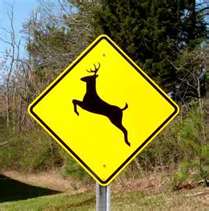-
Community
-
Column 1
- About
- Community Overview
- History
- Community Profile
- Chamber of Commerce
- City Maps
- Newsletters
- Request to Reserve a City Facility
Column 2
- Events and Activities
- City Calendar
- Parks, Trails & Facilities
- Parks, Trails & Facilities Directory
- Library
Column 3
- Schools
- School District
- Current Projects
- Public Safety
- Police
- Fire
- FAQs
-
-
City Services
-
Column 1
Column 2
- Departments
- City Administrator
- Assessor
- Building & Zoning
- City Clerk
- Engineer
- City Treasurer
- Fire & EMS
Column 3
-
-
Businesses
-
Column 1
Column 2
Column 3
-
-
Resources
-
Column 1
- Alerts and Notifications
- Email Subscriptions
- Events and Meetings
- Agendas and Minutes
- Calendar
- Maps
- GIS Map
- City Maps
Column 2
- Contact the City
- Submit a Request or Concern
- Staff Directory
- Code of Ordinances
- Documents and Forms
- Documents and Reports
- Forms and Applications
Column 3
-
Avoiding Vehicle-Deer Collisions: Fall Driving Tips
You may not pay much attention to those deer crossing warning signs on the side of the road, but statistics say that you probably should. According to the National Highway Traffic Safety Administration (NHTSA) and the Insurance Information Institute (III, auto deer collisions are responsible for around 150 occupant deaths each year. Not only that, they also cause more than 10,000 injuries and over $3.6 billion dollars in vehicle damage as well. With adult deer weighing in at over 250 pounds, the potential for disaster to drivers should come as no surprise.
In Wisconsin, deer are the third most commonly struck objects according to the Wisconsin DOT.
This is behind striking another vehicle and striking a fixed object. In 2009, investigating officers
reported 16,338 motor vehicle-deer crashes state-wide. Vehicle-deer crashes peak in October-November with a secondary peak in May-June in Wisconsin. Unfortunately, there were seven fatalities in vehicle-deer collisions during 2009. And surprisingly, Dane County had the highest number of reported deer crashes with 873 and Waukesha County came in second with 680.
Here are some tips for avoiding deer and auto collisions from the Insurance Information Institute:
- Deer are not just found on rural roads near wooded areas, many deer crashes occur on busy highways near cities and within city limits.
- Deer are unpredictable, especially when faced with glaring headlights, blowing horns and fast-moving vehicles. They often dart into traffic.
- Deer often more in groups. If you see one, there are likely more in the vicinity.
- Drive with caution when moving through deer-crossing zones, in areas know to have a large deer population and in areas where roads divide agricultural fields from forestland.
- Always wear your seat belt/harness and stay alert! In most cases you'll only have a split second or two for reaction time.
- When driving at night, use high beam headlights where there is no oncoming traffic. The high beams will better illuminate the eyes of deer on or near the roadway.
- Be especially attentive from sunset to midnight and during the hours shortly before and after sunrise. These are the highest risk times for deer-vehicle collisions.
- Brake firmly when you notice a deer in or near your path, but stay in your lane. Many serious crashes occur when drivers swerve to avoid a deer and hit another vehicle or lose control of their cars.
- Do not rely on devices such as deer whistles, deer fences and reflectors to deter deer. These devices have not proven effective.

